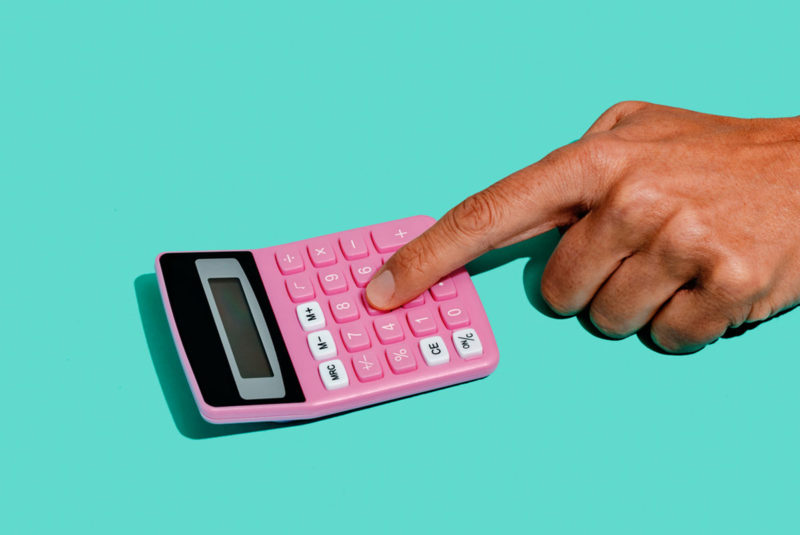If you thought your days of receiving report cards were over, think again. A credit report is a report card tied to your Social Security number and shows how well you’ve managed credit or debt in the past.
The information in your credit reports is used to calculate your credit scores. Positive information and demonstrating responsible financial behavior can improve your credit scores. Negative information, like late payments and collection accounts, can damage your credit scores.
But what is included in a credit report and how do you read it? How much can lenders learn about you when they pull your credit reports? Keep reading to learn more.
How Credit Reports Work
There are three major credit bureaus – also known as credit reporting agencies – that produce and sell credit reports: Equifax®, Experian™ and TransUnion®.
Lenders, creditors, companies and even landlords can purchase credit reports from the credit reporting agencies (CRAs) when you apply for new financing or services. These reports help them determine whether or not to take you on as a customer or tenant.
Existing creditors, like your credit card issuers, may review your credit history from time to time – to confirm that continuing to do business with you is still a smart investment.
Where credit report data comes from
The details on your credit reports primarily come from companies known as data furnishers in the credit world. Data furnishers are the lenders, creditors and collection agencies that provide information about their customers’ accounts to the CRAs.
Different types of accounts will remain on your credit reports for various lengths of time, and their impact could be either positive or negative. We’ll go over the impact of negative credit information later.
Credit reporting is completely voluntary. No law says companies have to report account information to the credit bureaus. Likewise, no law requires a CRA to accept information and include it in your credit reports.
However, if the information is shared and included on your credit reports, the Fair Credit Reporting Act (FCRA)[1] requires the information to be accurate.Errors on your credit reports can lead to lower scores and difficulty when applying for new credit. So it’s important to monitor your reports to identify any harmful items. Take steps to remove them as soon as possible by contacting the CRA that created the report.
Example credit reports
Before jumping into your credit reports, you may find it useful to browse through some simple examples. Follow the links below to get an idea of how your credit reports might look.
What Is on a Credit Report?
Credit reports generally include credit account information, personal information and public records while excluding your credit scores, income and debit cards.
Equifax®, Experian™ and TransUnion® each produce a separate credit report, giving you three different credit reports in all. There’s no uniform formatting when it comes to credit reports. But all reports contain the same general information about you and your credit history.
Personally identifiable information
This section of your credit report includes all the information that associates your identity with your credit. It may include:
- Name
- Date of birth
- Social Security number
- Current and previous addresses and phone numbers
- Current and previous employers
- Other identifying information
Credit accounts and collections
Your report provides a list of your credit accounts and details about each of them. This includes all your open bank accounts, credit cards and loans, as well as accounts you’ve closed for up to 10 years.
Your accounts may be organized according to status. Open accounts and closed accounts may be grouped separately. Additionally, accounts in positive standing may be grouped separately from accounts in negative standing.
Credit reports will also indicate if any accounts have been turned over to collection agencies. Accounts in collection will likely be grouped together. A collection account can remain on your credit reports for up to 7 years from the date the account entered serious delinquency – this is generally when the account has gone 180 days without payment.
Public records
The public records section, which contains negative information, is reserved for legal matters related to your debts. You may not see this section on your report if you don’t have any negative public information. But if you do find this section on your report, check to make sure all of the information looks correct.
In the past, this section included bankruptcy filings, tax liens and judgments. But an agreement between the credit bureaus and 31 state attorneys general, known as the National Consumer Assistance Plan (NCAP),[2] changed that. The agreement triggered policy changes that removed tax liens and judgments from credit reports, so you’ll likely only see bankruptcies.
However, since it’s a policy and not a law, tax liens and judgments could be included in reports in the future.
Credit inquiries
When a lender wants to check your credit, they perform a credit inquiry. This section of the credit report lists all the credit inquiries made in the last 2 years with that credit bureau. So if you’re looking at an Equifax® report, you’ll see all the lenders that checked your Equifax® report.
Credit inquiries can be made:
- When you apply for credit cards, loans and mortgages or request higher credit limits
- When lenders look to preapprove you for credit
- When current creditors perform routine checkups on your credit
- When you apply for a job, apartment or cellphone plan
Some credit checks are hard inquiries, which could cause a slight, temporary dip in your credit scores. Soft inquiries won’t have any effect on your scores. So you’ll want to ensure any hard inquiries on your reports were requested by you and that they’re no more than 2 years old.
Consumer statements, fraud alerts and disputes
This section of your credit report includes any consumer financial statements, fraud alerts or disputes you’ve made to a credit reporting agency. You may not see any of these marks if you’ve never made a consumer statement, placed a fraud alert on your credit reports or filed a dispute. Just make sure all of the information looks correct if you do have any.
Consumer statements are brief explanations relating to either your entire credit report or individual accounts. However, consumer statements are of limited value because it’s rare for a lender to read any statements when considering your loan or credit application.
Fraud alerts are a free security measure to help protect you from identity theft. There are three types of alerts:
- Initial fraud alerts
- Extended fraud alerts
- Active-duty fraud alerts (for active-duty service members)
All fraud alerts require lenders to confirm your identity before opening any new credit accounts associated with your Social Security number.
Finally, if you’ve filed a dispute with a credit bureau, you may also see those details in this section. If you ever find any incorrect or fraudulent information on your credit reports, you should file a dispute with the relevant bureau(s) as soon as possible.
How To Read a Credit Report
Now that you know what’s included in a credit report, let’s break down how to decipher the information.
You’ll want to make sure that all of your personal information is correct. If you find addresses you don’t recognize, it could mean someone has fraudulently used your information. This goes for all of your credit accounts in the report, too. So keep an eye out.
Each credit account will be identified by type: credit card, home mortgage, student loan, auto loan, etc.
You’ll see the name of the lender or creditor, and the date you opened the account. You may also see details like:
- An ID number for the account
- The amount of the loan or the account’s credit limit
- The highest account balance on credit cards
- Your responsibility for the account (owner, co-signer, etc.)
- Your payment history over the past 2 years or more
- Additional notes and remarks
When it comes to the status of each account, that field shows whether the account is open or closed and its current payment status.
Here are some examples:
- Open/never late: This means the account is currently open, and the payments have always been current.
- Closed/current: This means the account is closed, and the payments are current.
- Closed/never late: This means the account is closed, and you never made a late payment.
- Closed/was X days delinquent: This means the account is closed and was delinquent by a certain number of days.
- Charged-off: This means the debt on the account was delinquent, and the lender charged it off for tax purposes. However, you may still owe the debt.
- Paid: This means you paid off the account, usually a loan.
The inquiries on your reports will probably be broken into two sections: one for hard inquiries and the other for soft inquiries. Each inquiry will include the date it was made and the name of the party that made it. They may also include how long each inquiry will remain on your report or the reason for the request, such as credit application or tenant screening.
Do an overall check to make sure account names, numbers, addresses and statuses (open, closed, good standing, etc.) look right. Know that when you’re looking at the balances of your accounts, they may not reflect your current balance because it depends on when the lender or creditor last reported your activity to the bureaus. If balances look too far off, it’s best to contact the credit bureaus and your creditor or lender.
Where To Get a Credit Report
Now that you know what goes into credit reports, it’s time to check out yours. It’s good to check your credit report at least once a year. You can access a free copy of your credit report from AnnualCreditReport.com and then monitor them over time to guard against errors and fraud. This website is authorized by federal law and is free of charge.
Strive for Straight A’s on Your Credit Report (Card)
Your credit report can be a helpful tool to gauge how healthy your finances are. Use it to keep track of your accounts, credit inquiries, past payments, and more. Even if you haven’t missed any payments and don’t think there’s any cause for concern, we recommend you occasionally check your credit report to ensure there are no signs of errors or fraud.
Stay on top of your finances, and you’ll have a credit report you can be proud of!
Credit Report FAQs
Credit scores are calculated separately based on the information in credit reports. When you’re ordering your free report, each of the three credit bureaus will give you the option to add a credit score to your report for a fee.
If you’ve checked your credit reports and found that a credit card or other account is missing, it could either be an error or your credit card issuer or lender may not report to one or more of the credit bureaus. Remember, credit reporting is voluntary. Your lender or creditor may not agree to report your account. Other than finding a different company to do business with, there’s not much you can do in that situation.
Paying a collection account does not remove it from your credit reports. Although, some collection agencies may agree to stop reporting the account to credit bureaus in exchange for payment.
The Short Version
- A credit report is essentially a report card that’s tied to your Social Security number and shows how well you’ve managed credit or debt in the past
- Credit reports generally include credit account information, personal information and public records while excluding your credit scores, income and debit cards
- There’s no uniform formatting when it comes to credit reports. But all reports contain the same general information about you and your credit history
Federal Trade Commission. “Fair Credit Reporting Act.” Retrieved May 2022 from https://www.ftc.gov/legal-library/browse/statutes/fair-credit-reporting-act
Consumer Financial Protection Bureau. “A new retrospective on the removal of public records.” Retrieved May 2022 from https://www.consumerfinance.gov/about-us/blog/new-retrospective-on-removing-public-records/




